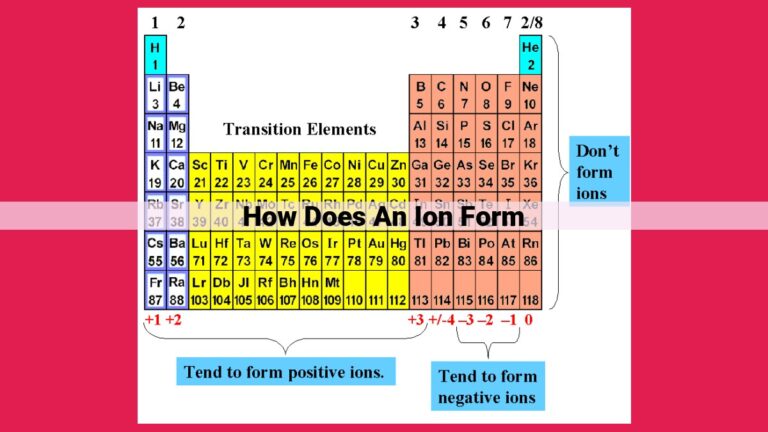Understanding Particle Accelerators: Types, Technology, And Significance In Scientific Research

Creating a particle accelerator involves understanding their purpose and significance in scientific research. Various types of accelerators exist, including linear accelerators and cyclotrons, each with unique working principles. Advanced technologies like magnetic resonance and plasma accelerators offer enhanced capabilities. Key components such as radio frequency and superconducting accelerators contribute to particle acceleration. Beam dynamics and vacuum technology ensure particle stability and performance. Particle accelerators play a crucial role in high-energy physics experiments, probing the fundamental laws of nature.
Particle Accelerators: Unlocking the Secrets of the Universe
In the realm of scientific exploration, there exists a remarkable tool that has revolutionized our understanding of the fundamental building blocks of the universe: the particle accelerator. These awe-inspiring machines, capable of propelling subatomic particles to near-unimaginable speeds, have become indispensable in unraveling the mysteries of the cosmos and driving technological advancements that shape our lives.
Scientific Revolution:
Particle accelerators have played a pivotal role in the development of modern physics. They have enabled physicists to probe the deepest levels of matter, leading to the discovery of new particles and the validation of theoretical models. By colliding particles at extremely high energies, these machines create conditions that mimic those found in the earliest moments of the universe, unlocking secrets that were once beyond our reach.
Technological Innovation:
Beyond the realm of pure science, particle accelerators have also had a profound impact on technology. Synchrotron radiation, a byproduct of particle acceleration, has proven invaluable in a wide range of fields, including medicine, materials science, and industrial processing. Particle accelerators are also crucial for the development of more efficient and environmentally friendly energy sources, such as nuclear fusion.
Delving into the Heart of Particle Accelerators
The world of science and technology would be incomplete without the remarkable contributions of particle accelerators. These colossal machines push the boundaries of human knowledge by propelling tiny subatomic particles to staggering speeds and energies. Their significance extends far beyond the realms of theoretical physics; they hold immense practical value in a multitude of fields.
Unveiling the Types of Particle Accelerators
Particle accelerators come in a kaleidoscope of shapes and sizes, each tailored to specific research needs. Among the most prevalent types are:
-
Linear Accelerators (Linacs): These accelerators hurl particles in a straight line, using a rhythmic series of electric fields to boost their speeds with each successive encounter.
-
Cyclotrons: These ingenious devices employ a circular path to accelerate particles. As particles orbit within the cyclotron’s vacuum chamber, they are repeatedly nudged by a magnet, spiraling outward as they gain energy.
-
Synchrotrons: Synchrotrons, the behemoths of the accelerator world, combine the principles of linacs and cyclotrons. Particles are first energized in a linac and then guided into a circular path, where they are subjected to a sequence of synchronized electric and magnetic fields, reaching energies that defy imagination.
These diverse types of accelerators serve a myriad of purposes, from probing the innermost secrets of the atom to unlocking the power of nuclear medicine. They are indispensable tools in unraveling the mysteries of the universe and shaping the future of technology.
Unveiling the World of Particle Accelerators: A Journey into Speed and Discovery
In the realm of scientific exploration, particle accelerators stand as towering titans, propelling us into the depths of the subatomic universe. These remarkable machines have revolutionized our understanding of matter, energy, and the fundamental laws that govern our existence.
Understanding Particle Accelerators
Particle accelerators, as their name suggests, are devices designed to accelerate charged particles to extraordinary speeds. They employ a symphony of electrical and magnetic fields to propel these particles along a predetermined path, reaching energies far beyond what can be achieved through natural processes.
Types of Particle Accelerators
The world of particle accelerators is a diverse one, each type tailored to specific research needs. Among the most prominent are:
-
Linear Accelerators (Linacs): These accelerators accelerate particles in a straight line, using alternating electric fields to impart energy. They find applications in radiation therapy and materials analysis.
-
Cyclotrons: These accelerators employ a circular path to accelerate particles. Their compact design makes them suitable for medical imaging and particle therapy.
-
Synchrotrons: Synchrotrons combine circular acceleration with alternating magnetic fields to keep particles in a fixed orbit. They are used in high-energy physics experiments at facilities such as the Large Hadron Collider.
Advanced Accelerator Technologies
The realm of particle acceleration is constantly evolving, with advanced technologies emerging to push the boundaries of research.
-
Magnetic Resonance Accelerators: These accelerators utilize resonant frequencies to accelerate particles, offering the potential for higher energy and smaller size.
-
Plasma Accelerators: Plasma accelerators harness the power of ionized gas to accelerate particles over shorter distances, enabling the creation of compact and powerful accelerators.
Key Components of Accelerators
The heart of every particle accelerator lies in its specialized components:
-
Radio Frequency Accelerators: These devices use alternating electric fields to impart energy to particles, creating the initial acceleration.
-
Superconducting Accelerators: Superconducting magnets generate strong magnetic fields with minimal energy loss, enabling the maintenance of particle orbits and minimizing operating costs.
Beam Dynamics and Vacuum Technology
Accelerator design hinges on the intricate balance of beam dynamics, ensuring that particles remain focused and stable during acceleration. Maintaining a near-perfect vacuum within the accelerator is crucial to prevent collisions between particles and gas molecules.
Applications in High-Energy Physics
Particle accelerators play a pivotal role in high-energy physics experiments, where they probe the fundamental laws of nature through collisions between energetic particles. These experiments have led to groundbreaking discoveries, including the Higgs boson and the existence of the top quark.
Particle accelerators continue to shape scientific research and technological advancements, illuminating the hidden realms of the subatomic world. As we push the boundaries of accelerator design and construction, we unlock new possibilities for understanding the universe and harnessing its power for the betterment of society.
Explore advanced accelerator technologies such as magnetic resonance accelerators and plasma accelerators.
Unveiling the Wonders of Advanced Accelerator Technologies
Imagine a realm where particles dance at the speed of light, colliding with unimaginable force to unravel the secrets of the universe. This extraordinary arena belongs to advanced particle accelerators, the unsung heroes of scientific exploration.
Magnetic resonance accelerators, like masterful conductors, orchestrate the motion of particles using magnetic fields. Their unique ability to accelerate particles over long distances makes them crucial for high-energy physics experiments. Think of them as cosmic accelerators, propelling particles to dizzying speeds to probe the deepest mysteries of the cosmos.
Plasma accelerators, the rebels of the accelerator world, harness the power of plasma to accelerate particles. These futuristic devices create intense electric fields that propel particles with unparalleled efficiency. Their compact size and portability make them ideal for next-generation medical applications, including cancer treatment and medical imaging.
These cutting-edge technologies push the boundaries of accelerator science, promising to revolutionize the way we explore the unknown. They pave the way for groundbreaking discoveries, unlocking the potential for transformative advancements in medicine, industry, and beyond.
Particle Accelerators: Exploring the Edge of Scientific Discovery
Particle accelerators, the behemoths of the scientific world, have revolutionized our understanding of the universe and propelled technological advancements to unprecedented heights. These machines hurl subatomic particles to mind-boggling speeds, unlocking secrets hidden deep within the fabric of reality.
Types of Particle Accelerators: A Tour de Force
The world of particle accelerators is a diverse one, each type showcasing unique capabilities. Linear accelerators, like sleek race tracks, accelerate particles in a straight line, while cyclotrons and synchrotrons employ powerful magnets to guide particles in circular paths. These accelerators serve as the engines that drive scientific breakthroughs.
Advanced Accelerator Technologies: Breaking Barriers
The quest for more powerful and efficient accelerators has led to the development of cutting-edge technologies. Magnetic resonance accelerators harness the power of magnetic resonance imaging (MRI) to accelerate particles, while plasma accelerators use ionized gas to propel particles with unparalleled efficiency. These advancements open new avenues for exploration, pushing the boundaries of scientific research.
Key Components: The Accelerator Ecosystem
Inside particle accelerators, a symphony of components orchestrates the acceleration process. Radio frequency accelerators provide the energy boost, while superconducting accelerators minimize energy loss, maximizing particle speed. These components, like the cogs in a well-oiled machine, ensure the smooth and efficient operation of these scientific marvels.
Beam Dynamics and Vacuum Technology: Precision Engineering
Accelerating charged particles poses unique challenges. Beam dynamics ensures that particle beams remain focused and stable, while vacuum technology creates an ultra-high vacuum within accelerators, minimizing collisions with stray gas molecules. These meticulous considerations guarantee the accuracy and reliability of experimental results.
Applications in High-Energy Physics: Unraveling the Cosmos
Particle accelerators are the workhorses of high-energy physics, enabling researchers to probe the fundamental laws of nature. By colliding particles at unimaginable energies, these machines create microcosms of the universe’s birth, revealing the secrets of its origins and evolution.
Particle accelerators are not just machines; they are vessels of discovery. They have unlocked the secrets of the universe’s smallest constituents, revolutionized medical treatments, and pushed the boundaries of human knowledge. As researchers continue to refine and enhance these scientific behemoths, the future holds infinite possibilities for scientific exploration and technological innovation.
Key Components of Accelerators
At the heart of particle accelerators lie two crucial components that play pivotal roles in accelerating charged particles: radio frequency accelerators and superconducting accelerators. These sophisticated devices work in tandem to propel particles to unprecedented energies, paving the way for groundbreaking scientific discoveries.
Radio frequency (RF) accelerators, as their name suggests, utilize electromagnetic waves at radio frequencies to accelerate particles. These waves, generated by specialized radio frequency cavities, interact with charged particles, propelling them forward like surfers riding waves. The cavities are strategically arranged along the accelerator’s path, forming a series of synchronized kicks that exponentially increase particle energies.
Superconducting accelerators, on the other hand, harness the remarkable properties of superconductors to boost particle acceleration. Superconductors exhibit zero electrical resistance when cooled to extremely low temperatures, allowing for the creation of powerful magnetic fields without energy loss. These fields act as invisible tracks, guiding and accelerating particles along their circular or linear paths.
The combination of radio frequency accelerators and superconducting accelerators enables the construction of particle accelerators with ever-increasing energies. These behemoths of modern physics push the boundaries of human knowledge, unlocking the secrets of the subatomic world and paving the way for transformative technologies that shape our future.
Key Components of Accelerators: Unleashing the Power of Particle Acceleration
In the realm of particle accelerators, two crucial components play a pivotal role in propelling particles to incredible speeds: radio frequency accelerators and superconducting accelerators. Let’s delve into their fascinating contributions to the exhilarating journey of particle acceleration.
Radio Frequency Accelerators: Symphony of Electromagnetic Fields
Imagine a dance between charged particles and oscillating electromagnetic fields. Radio frequency accelerators create an elegant choreography where particles are repeatedly immersed in these fields. As the particles pass through the fields, they receive an electromagnetic kick, gaining energy with each interaction. This rhythmic dance continues, propelling the particles to ever-higher speeds.
Superconducting Accelerators: Supercooling for Supercharged Particles
Conventional accelerators encounter a limitation due to energy loss caused by electrical resistance. Superconducting accelerators ingeniously overcome this obstacle by operating at extremely low temperatures, where certain materials exhibit zero electrical resistance. These superconductors allow particles to glide through the accelerator with minimal energy loss, reaching even greater speeds.
By harnessing the power of radio frequency accelerators and superconducting accelerators, scientists can control and manipulate particle beams with unprecedented precision. These components are the heart of particle accelerators, enabling us to explore the subatomic world and push the boundaries of scientific knowledge.
Introduce the concept of beam dynamics and its importance in accelerator design.
Beam Dynamics: The Orchestrator of Particle Acceleration
In the realm of particle accelerators, where charged particles dance at incredible speeds, the intricate choreography is governed by the principles of beam dynamics. This vital concept orchestrates the smooth acceleration and manipulation of particle beams, ensuring optimal performance and precise experimental outcomes.
What is Beam Dynamics?
Beam dynamics encompasses the study of the collective behavior of charged particles as they traverse an accelerator. It involves understanding how particles interact with electric and magnetic fields, their stability, and how to control their motion. By meticulously designing and configuring accelerator components, scientists can guide and focus particle beams with unparalleled precision.
Importance in Accelerator Design
Beam dynamics plays a crucial role in every aspect of accelerator design and operation. It determines:
- Beam Stability: Ensuring that particles remain within the desired trajectory and do not wander off-course.
- Beam Intensity: Controlling the number of particles in a beam, maximizing its power and experimental potential.
- Beam Quality: Maintaining the desired distribution and energy spread of particles, essential for accurate measurements.
Challenges and Advancements
Achieving optimal beam dynamics is a complex endeavor. Physicists face challenges such as:
- Space Charge Effects: As particle density increases, electrostatic forces can disrupt beam behavior.
- Instabilities: Natural fluctuations can destabilize beams, leading to energy loss or beam breakup.
Overcoming these obstacles requires innovative solutions in accelerator design and construction. Researchers are developing advanced beam diagnostic techniques, using simulations to optimize beam dynamics, and exploring novel acceleration methods such as plasma-based accelerators.
Beam dynamics is the unsung hero of particle accelerators, ensuring the efficient and precise acceleration of charged particles. By understanding and harnessing the intricacies of beam behavior, scientists unlock the full potential of these powerful tools, advancing our knowledge in high-energy physics and beyond.
Maintaining a Vacuum in Accelerators: A Delicate Balance
Within the heart of particle accelerators, a realm where particles dance at near-light speeds, the presence of even a tiny molecule of air can wreak havoc. To harness the power of these scientific marvels, scientists must maintain a near-perfect vacuum – a challenge that requires both ingenuity and precision.
The Unwanted Guests: Air and Gas Molecules
Like unwelcome spectators in a concert hall, air and gas molecules can interfere with the delicate symphony of particles within an accelerator. Even a single molecule can disrupt the particles’ trajectory, leading to inaccuracies and affecting experimental outcomes.
Pumping Away the Uninvited
To eliminate these unwanted guests, accelerators are equipped with a vast network of pumps. These pumps work tirelessly, removing air and gas molecules from the accelerator’s chamber. One type of pump, known as an ion pump, uses strong electric fields to ionize gas molecules, which are then expelled from the system.
A Constant Battle against Leaks
Maintaining a vacuum is an ongoing struggle, as tiny leaks can arise from even the most well-sealed systems. Specialized leak detectors are constantly vigilant, sniffing out any apertures that allow air to seep in. Once a leak is detected, a team of experts quickly springs into action to seal it, ensuring the vacuum’s integrity.
Special Materials: The Barrier to Contaminants
The materials used to construct accelerators play a crucial role in minimizing contamination. Stainless steel, a material resistant to gas absorption, is commonly used. In areas where even lower levels of contamination are required, scientists turn to copper – a metal with even stronger anti-contamination properties.
The Rewards of a Near-Perfect Vacuum
The effort invested in maintaining a near-perfect vacuum is well worth it. It enables scientists to accelerate particles to unprecedented energies, opening doors to unraveling the secrets of the universe. Without this delicate balance, the groundbreaking discoveries made possible by particle accelerators would remain beyond our reach.
Applications in High-Energy Physics
Particle accelerators play a vital role in the realm of high-energy physics, the branch of science that explores the fundamental particles and forces that shape our universe. These colossal machines are the engines that power some of humanity’s most ambitious experiments, unlocking the secrets of the subatomic world.
Imagine a particle accelerator as a stage on which the smallest inhabitants of the universe act out their grand play. Physicists use these accelerators to collide particles at tremendous energies, unleashing a torrent of new particles that reveal clues about the nature of matter.
One of the most renowned particle accelerators is the Large Hadron Collider at CERN in Switzerland. This sprawling behemoth, stretching over 16 miles in circumference, accelerates protons to speeds close to the speed of light and smashes them together with unprecedented force. The resulting collisions create a microscopic soup of particles, providing scientists with an unprecedented window into the unknown.
From the discovery of the Higgs boson, the particle responsible for giving other particles their mass, to the search for new physics beyond the Standard Model, particle accelerators are essential tools in high-energy physics. They allow us to probe the deepest secrets of matter, unravel the mysteries of the cosmos, and push the boundaries of human knowledge.
Particle Accelerators: Unlocking the Secrets of the Universe
Picture this: a machine so powerful, it can smash atoms into tiny subatomic particles. Meet particle accelerators, the colossal instruments that have revolutionized our understanding of the fundamental laws governing our existence.
At the heart of these accelerators lies a simple yet profound quest: to explore the tiniest building blocks of matter. By propelling electrons, protons, and other particles to near-light speeds, researchers unleash a realm of unimaginable energy and insights.
Exploring the Unseen
Inside particle accelerators, subatomic particles embark on a perilous journey, hurtling through electromagnetic fields that guide and accelerate them to mind-boggling speeds. These collisions create a torrent of data, revealing the innermost secrets of matter.
Experiments in high-energy physics are akin to peering into a time machine, delving into the very moment after the Big Bang. By recreating these cosmic conditions, scientists probe the nature of dark matter, unravel the mysteries of black holes, and unravel the elusive Higgs boson, the particle responsible for giving mass to everything we see.
Through these experiments, physicists have unlocked a treasure trove of knowledge about the fundamental forces that shape our universe. They have unraveled the enigmatic nature of quarks, elucidated the secrets of the strong nuclear force, and laid bare the mysteries of the weak force.
Beyond Discovery
Particle accelerators are not merely tools for scientific exploration. They have also fueled a cascade of technological advancements, from medical imaging systems to cancer treatments and materials science.
For instance, accelerators power medical devices such as PET (positron emission tomography) and MRI (magnetic resonance imaging) scanners, enabling us to visualize and diagnose medical conditions with unparalleled accuracy. They also play a crucial role in the development of new cancer therapies, using high-energy beams to target and eliminate tumors with minimal harm to healthy tissue.
Harnessing the Power
Unleashing the full potential of particle accelerators requires an unwavering commitment to innovation and collaboration. Engineers and scientists around the world are constantly pushing the boundaries, developing new techniques and advanced technologies to enhance these powerful machines.
The Large Hadron Collider, the world’s largest and most powerful particle accelerator, is a testament to this pursuit. Located at the European Organization for Nuclear Research (CERN), the LHC has opened up new frontiers in our understanding of the universe, paving the way for even more groundbreaking discoveries in the years to come.
As we continue to unlock the mysteries of the quantum realm, particle accelerators will remain indispensable tools, guiding us towards a more profound understanding of the fundamental laws that govern our existence. Their significance extends far beyond the laboratory, shaping our perception of the universe and inspiring technological advancements that will continue to benefit humanity for generations to come.
Particle Accelerators: Unlocking the Secrets of the Universe
Particle accelerators are colossal machines that push the boundaries of science and technology, enabling us to delve into the deepest secrets of the universe. These remarkable devices play a pivotal role in our quest for knowledge, unraveling the mysteries of subatomic particles.
Scientific Frontiers:
Particle accelerators are the cornerstone of high-energy physics experiments. By colliding particles at near-light speeds, these accelerators create conditions that mimic the moments after the Big Bang, allowing us to probe the very fabric of our universe. They have helped us discover new particles, validate theories, and gain unprecedented insights into the fundamental forces that govern existence.
Technological Advancements:
Beyond their scientific prowess, particle accelerators have also revolutionized various technological fields. They are essential in medical applications like radiation therapy, where they precisely target diseased cells. In industry, they analyze materials, modifying their properties for improved performance. Additionally, accelerators play a crucial role in energy research, aiding in the development of more efficient and sustainable sources.
Challenges and Advancements:
Building and operating particle accelerators is an intricate and demanding endeavor. They require vast amounts of energy and complex engineering to accelerate particles to unimaginable speeds while maintaining near-perfect vacuum conditions. However, the challenges have pushed the boundaries of accelerator design, leading to groundbreaking advancements like superconducting magnets and plasma acceleration techniques. These innovations promise even more powerful and compact accelerators in the future.
Particle accelerators are indispensable tools in the pursuit of scientific knowledge and technological progress. They enable us to explore the very nature of matter and the origins of the universe, while also offering practical benefits that touch our daily lives. As we continue to push the limits of these extraordinary machines, we can only anticipate the groundbreaking discoveries and advancements that lie ahead.
Highlight the challenges and advancements in accelerator design and construction.
Particle Accelerators: Advancing Science and Technology
Particle accelerators are the engines driving some of the most groundbreaking scientific discoveries and technological advancements of our time. From unlocking the secrets of the universe to developing life-saving medical treatments, these extraordinary machines are revolutionizing our understanding of the world around us.
Challenges and Advancements in Accelerator Design and Construction
Designing and constructing particle accelerators is no easy feat. Scientists and engineers face a myriad of challenges, including:
- Beam stability: Keeping the accelerated particles tightly bunched and focused requires precise control of their trajectory and energy.
- Radiation exposure: The intense energy levels involved in particle acceleration can generate harmful radiation, necessitating robust shielding and safety measures.
- Cost and complexity: Accelerators can be enormous, expensive, and highly complex, requiring vast amounts of funding and skilled manpower.
Despite these challenges, advancements in accelerator technology continue to push the boundaries of possibility.
- Superconductivity: Superconducting materials, which lose all electrical resistance at extremely low temperatures, are used in many modern accelerators, reducing energy losses and increasing efficiency.
- Advanced beam focusing techniques: Sophisticated magnets and electromagnetic fields are employed to keep the particle beams focused and stable during acceleration.
- Compact designs: Advances in accelerator design have enabled the development of smaller and more compact accelerators, making them more accessible and affordable.
These advancements are paving the way for the next generation of particle accelerators, which will enable scientists to explore even deeper into the fundamental mysteries of nature. From the search for the Higgs boson to breakthroughs in cancer therapy, particle accelerators continue to drive progress in our quest for knowledge and the improvement of human life.





